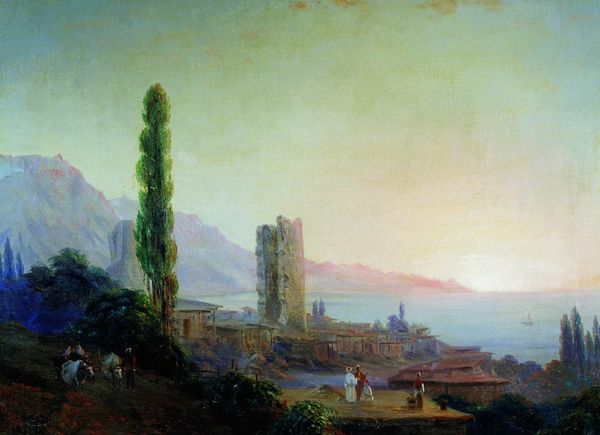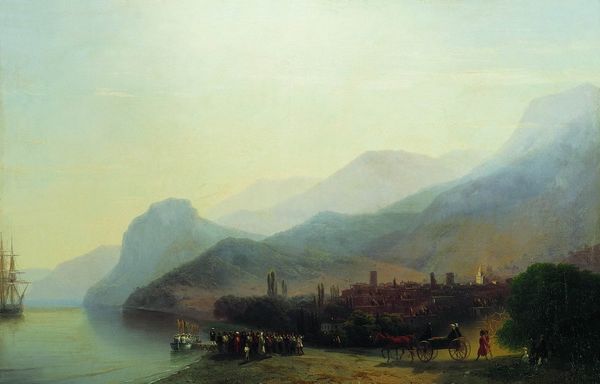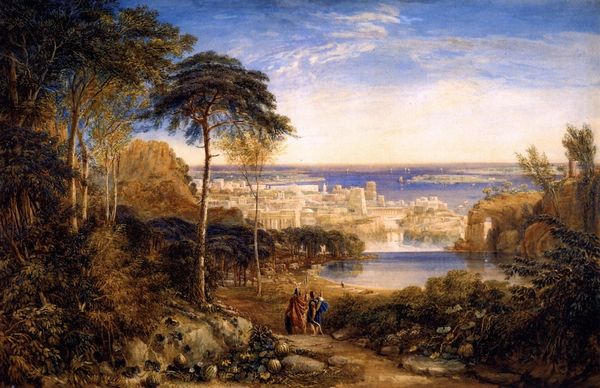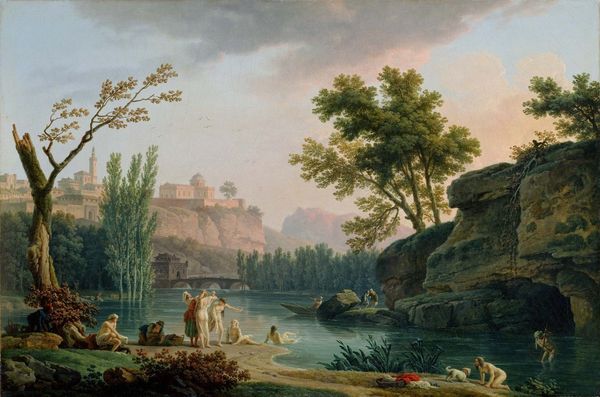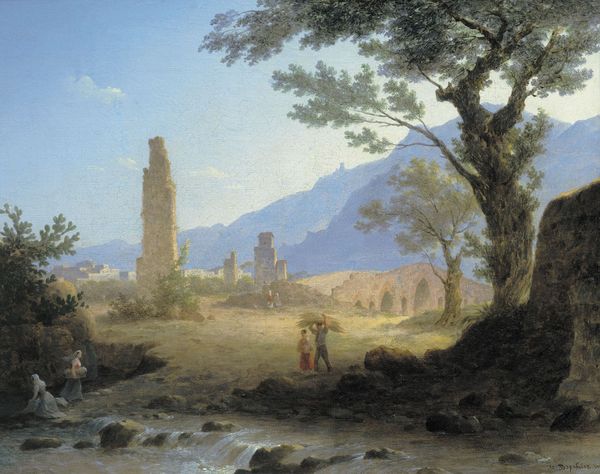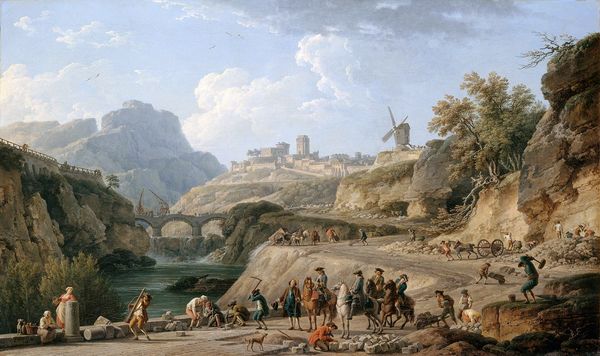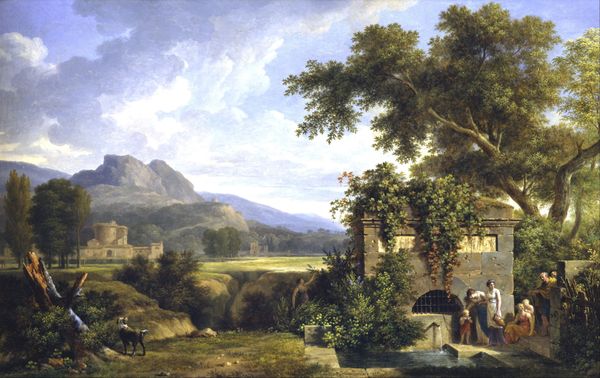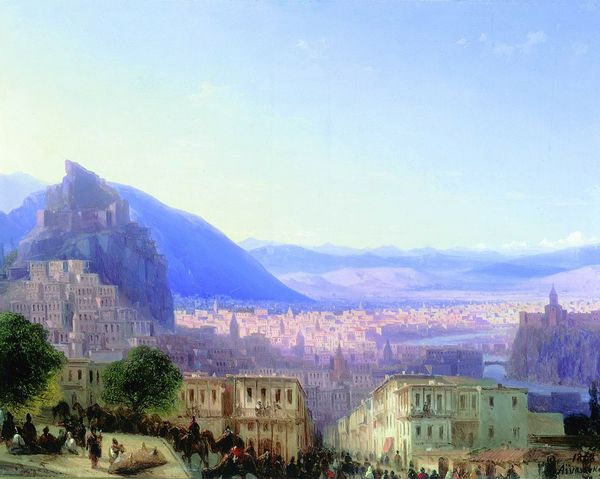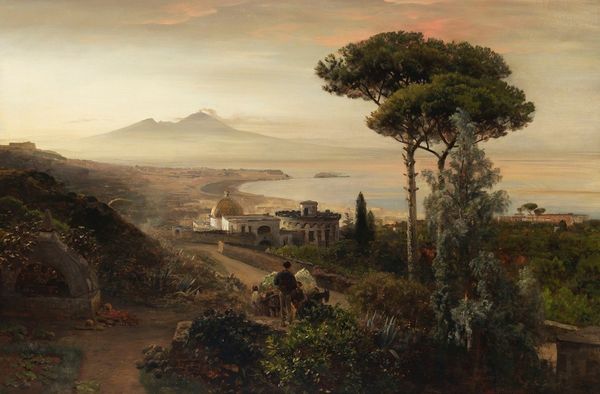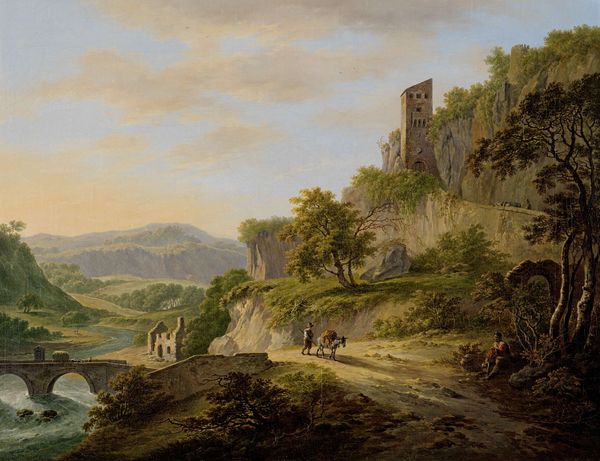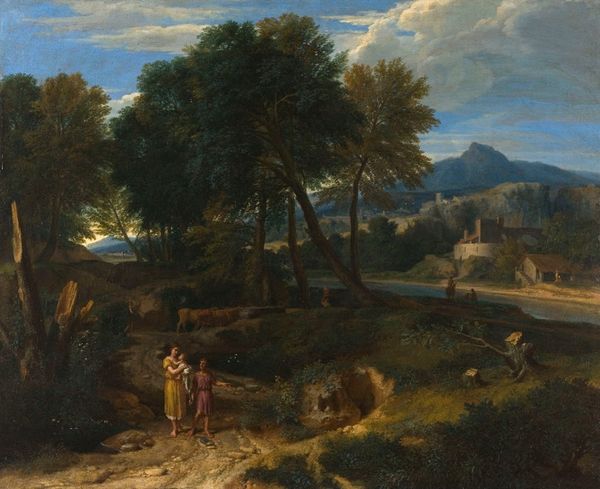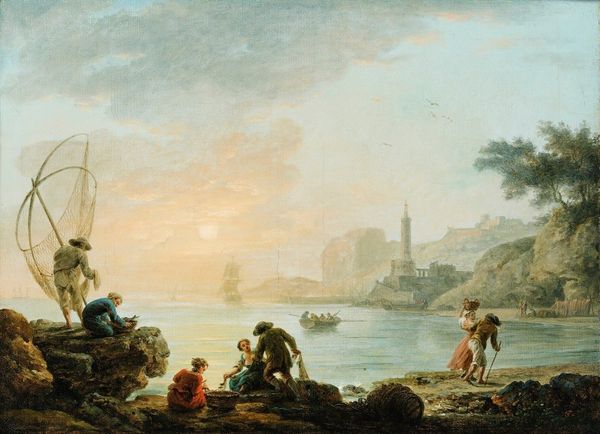
Dimensions: 130 x 170 cm
Copyright: Public domain
Curator: This is Ivan Aivazovsky’s “View of Tiflis,” painted in 1869. A grand panorama rendered in oil. Editor: It has such a dreamy, almost melancholic feel, doesn’t it? The light is diffused, and the colors are so soft… Curator: Aivazovsky’s work frequently delves into cityscapes and landscapes, but always filtered through his distinctive Romantic sensibility. I am particularly drawn to the brushwork that constructs these architectural forms in contrast with those figures near the base who may or may not be participating in manufacturing anything within that urban construct.. What is your feeling towards it? Editor: My eye is immediately drawn to the figures arranged in the foreground. The artist intentionally placed this assembly of locals as to mirror the symbols of daily life in Tiflis, right? Look at the details in their attires. Curator: Indeed. While seemingly a detached observer, his engagement hints towards the intersection between Russian expansionism and orientalism during this epoch. The level of detail and precision, must have consumed immense amounts of oil-based products for his desired effect. Editor: Certainly. The sky alone conveys a unique meaning through atmospheric effects and light manipulation. There’s a definite orientalist tone here that plays with our ideas of otherness and longing for some lost idea. The visual lexicon really is the highlight! Curator: And let's not ignore how the industrialization boom happening further east likely played a factor on both accessibility to pigments or art's demand as cultural symbol within expanding empires. Aivazovsky skillfully intertwined technical advancements with aesthetic values. Editor: Very insightful! I didn't connect the pigment accessibility to broader economical shifts. And it clearly impacted the meanings behind artworks! Curator: His commitment offers great opportunity to examine how paintings serve not solely visual delight; they record socio-historical information too! Editor: Absolutely. Examining works with the tools to decode symbols of an artwork broadens our grasp towards history as to include aspects never captured literally by written works. Curator: Precisely! And thank you, my friend for this stimulating analysis on the relationship art maintains, however discretely, to industrial and economical process.
Comments
No comments
Be the first to comment and join the conversation on the ultimate creative platform.
